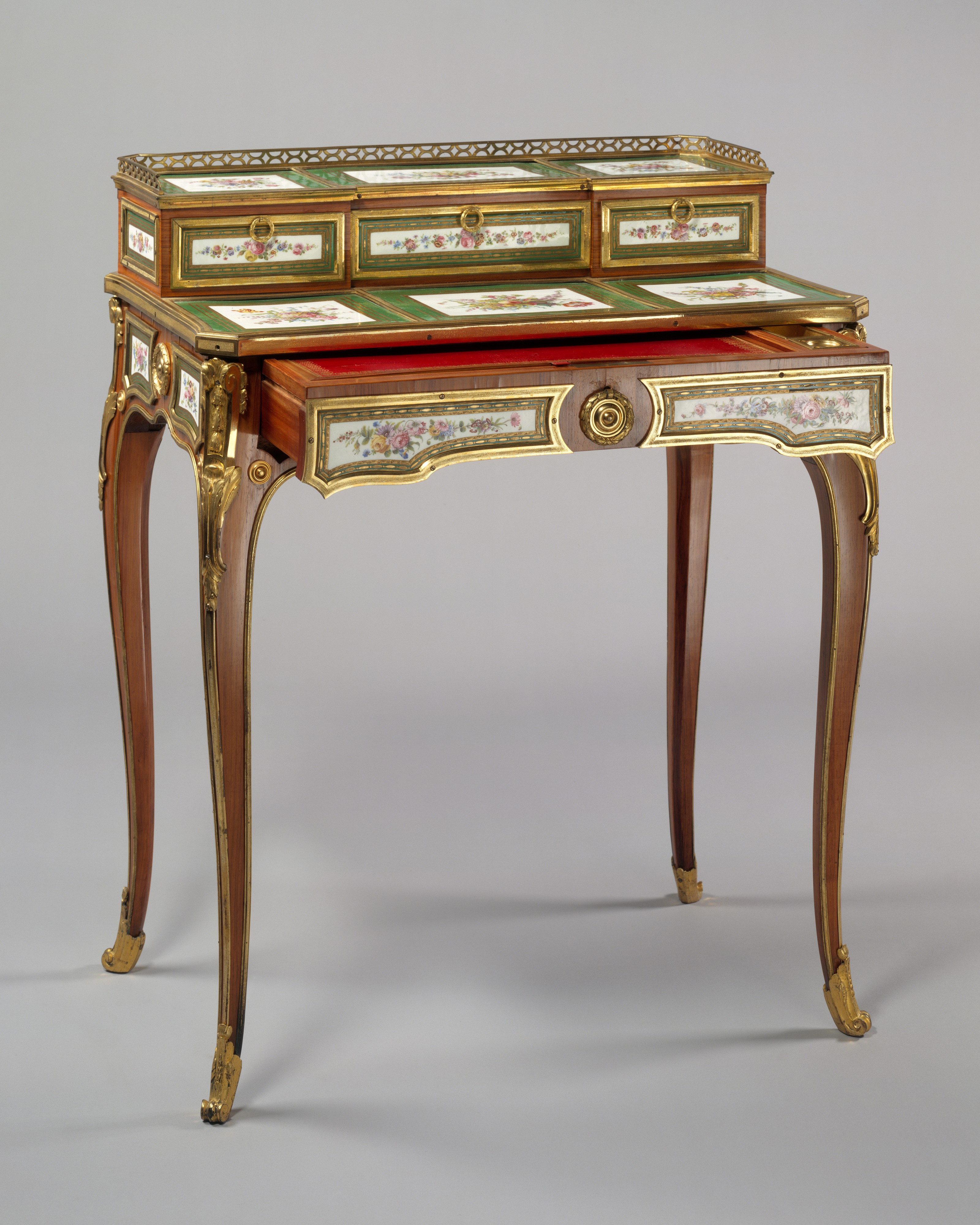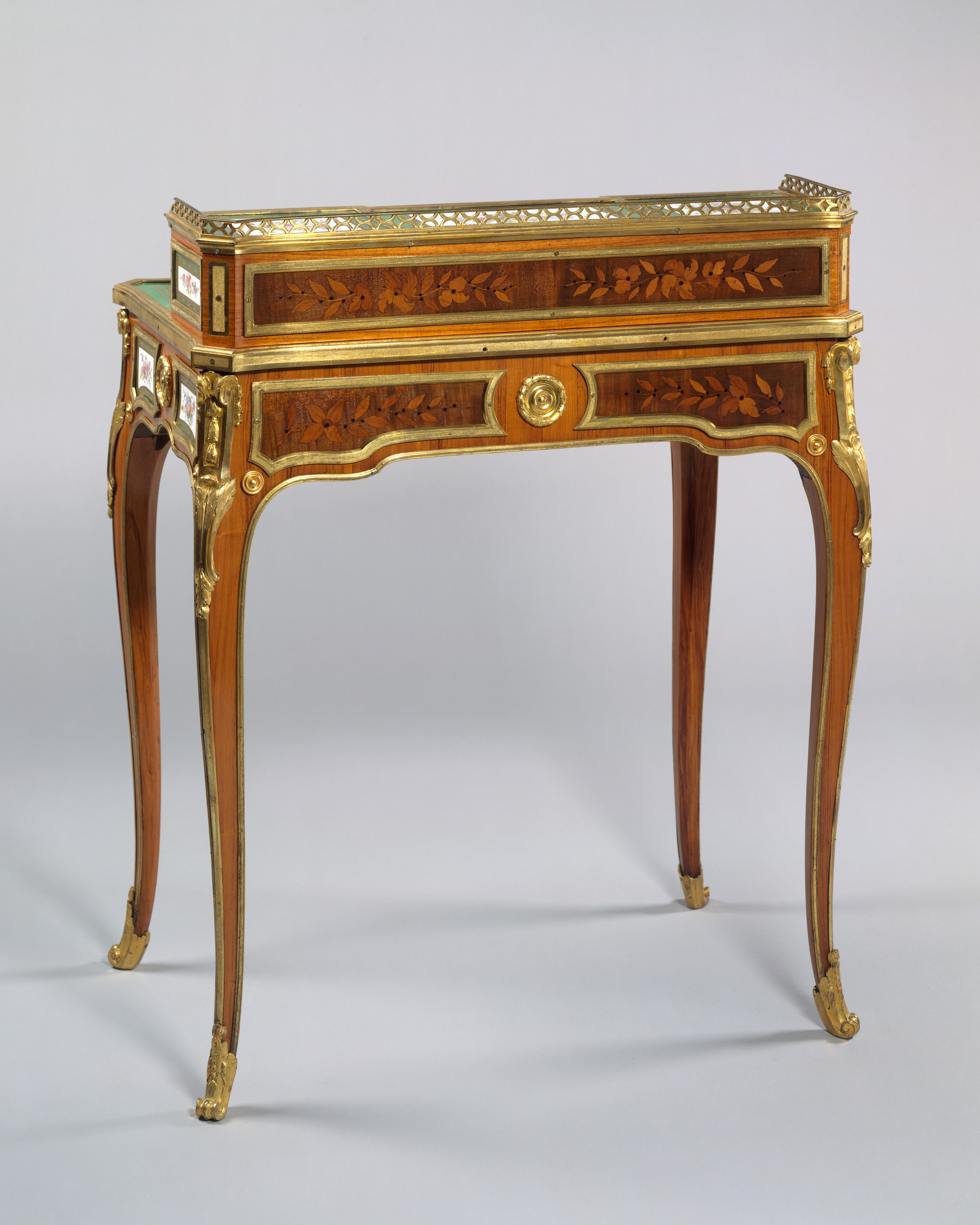Desk (bonheur du jour)
This type of elegant lady’s writing desk was called a bonheur-du-jour, literally “happiness of the day” which may refer to the joys of letter writing.
Eleven of these desks are known of which The Met has four in its collection: see also 58.75.48; 58.75.49; and 1982.60.54. They are all either signed by the ébéniste Martin Carlin, as in this case, or are attributed to him. Carlin specialized in the production of small, precious pieces of furniture, working mainly for the marchand-mercier (dealer in luxury goods) Simon-Philippe Poitier Poitier, and for his partner and successor Dominique Daguerre, who provided him with designs, porcelain plaques, lacquer panels and gilded bronzes for mounting.
Supported on slender cabriole legs, the desk has three drawers in the upper section. The single drawer in the lower section, its keyhole is concealed behind the hinged circular wreath and patera pull, contains on the right, a loose container for writing materials with the original gilt-metal inkwell, a pounce pot (for sand to blot excess ink) and a trough for a sponge, and on the left, the main compartment with a hinged writing panel inset with modern red leather, which could be lifted in order to store writing implements. The container for the writing materials has a dealer’s inscription in black ink underneath: 1 piece en soudurre forte. Such inscriptions are not uncommon on furniture ordered by Poirier. The inscription probably gives instructions to the silversmith or supplier of writing materials to whom the empty container was sent to be fitted with metal accessories.
All of the known desks are mounted with seventeen Sevres porcelain plaques painted with floral decoration within an apple-green and gold tooled border. The majority of plaques on this desk are painted on the reverse in blue with the date-letter r for 1770 within crossed LL’s and have the marks of four flower painters.
This bonheur-du-jour and the other one in the Linsky collection (1982.60.54) were in Spencer House, London, by 1862 and were exhibited at an exhibition at the South Kensington Museum when they were mistakenly described as a pair. They were acquired by Lord Astor for Cliveden where they remained until their sale to Mr. and Mrs. Linsky.
Due to rights restrictions, this image cannot be enlarged, viewed at full screen, or downloaded.
This artwork is meant to be viewed from right to left. Scroll left to view more.




